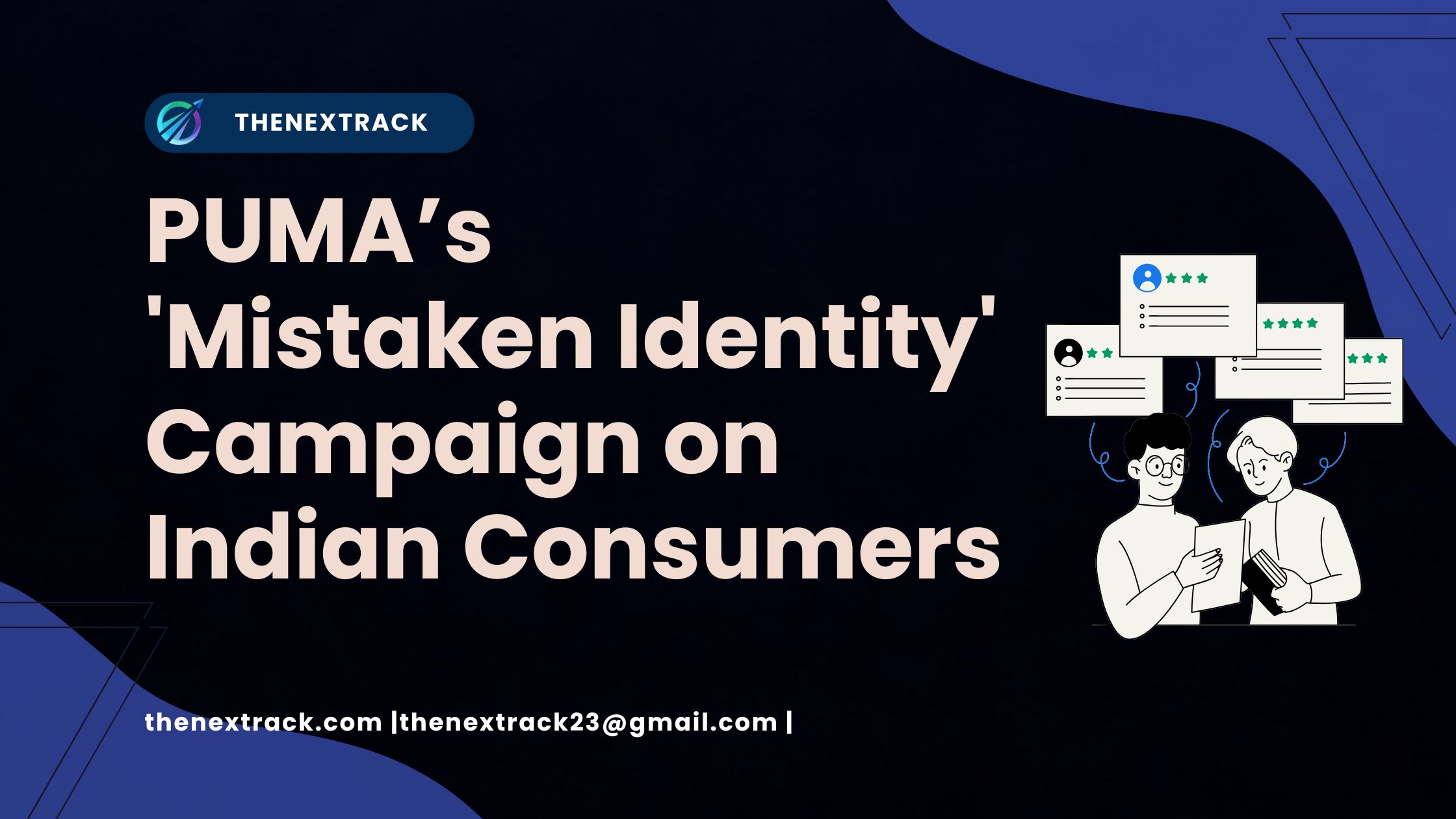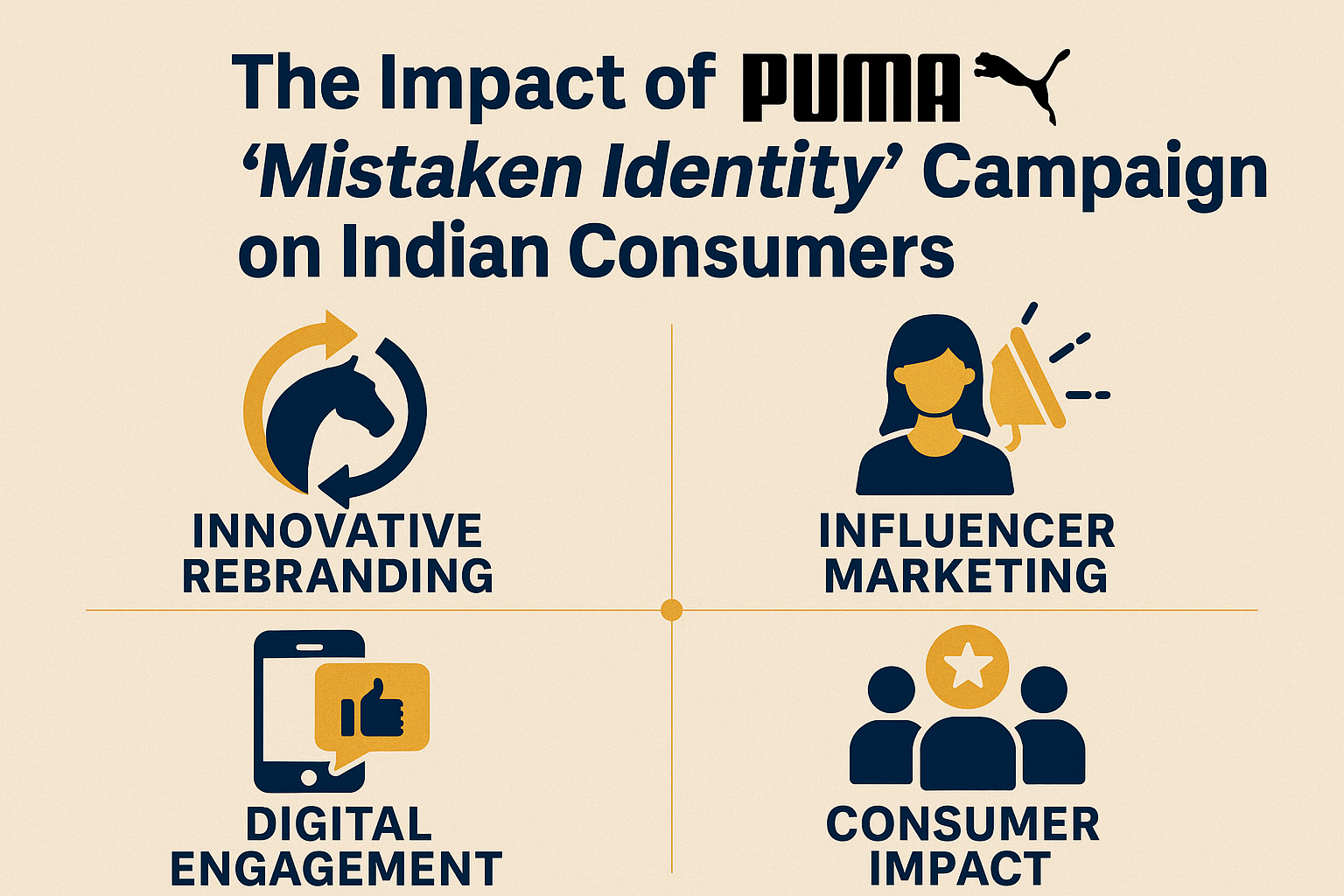The Impact of PUMA’s ‘Mistaken Identity’ Campaign on Indian Consumers
Introduction
Picture this: one of the biggest global sportswear brands temporarily changes its name, and the whole country starts buzzing. That’s exactly what PUMA did in its 2025 campaign, cleverly titled “Mistaken Identity.” The move was bold, intriguing, and, let’s face it, a little risky. But hey, that’s what made it so memorable, right?
The lead campaign figure centered on PV Sindhu because she served as PUMA India’s longtime brand spokesperson and India’s beloved badminton champion. During its “PVMA” rebranding period PUMA paid tribute to its ambassador Sindhu through this brand name change as a way to demonstrate its dedication to sports within India. The unusual brand identity adjustment served two major objectives because it let PUMA establish emotional and cultural bonds with its Indian customer base.
The different strategy of this distinct marketing plan influenced what way did Indian consumers react? Let’s dive in:
Background of the ‘Mistaken Identity’ Campaign
Before we get into the nitty-gritty, let’s set the stage. PUMA has been a significant player in India’s sportswear market for years. But in a market where competition from brands like Nike and Adidas is fierce, standing out isn’t easy. Enter the ‘Mistaken Identity’ campaign.
- People must appreciate the achievements PV Sindhu has made in Indian sports.
- The branding campaign promotes PUMA’s status as an organization which backs hometown champions nationally and socially.
- Tarise on India’s emerging affection for badminton since the sport is growing faster thanks to Sindhu’s influence.
Relationship marketing occurred when PUMA operated as PVMA momentarily to generate buzz in the market. The name adjustment offered more than an ordinary change since it served as an announcement.
Key Marketing Strategies Used
1. Temporary Rebranding
The initial aspect of this campaign involved renaming the brand to “PVMA”. The “PVMA” branding initiative transformed PUMA into more than just an honors reward for Sindhu while simultaneously making consumers take note of the brand. The move served as a strategic tactical move for brand memory creation. Typically global brands avoid renaming themselves to appeal to specific target audiences.
2. Influencer Marketing
The face of PVMA marketing appeared on all platforms through PV Sindhu because of her popular status. Through her widespread recognition she immediately provided credibility that directly appealed to people from across the audience spectrum. Through her fan network PUMA distributed their messaging content across multiple social media platforms.
3. Digital and Social Media Blitz
The advertising activities reached beyond standard media platforms. PUMA delivered total support across Instagram Twitter and YouTube platforms through videos that showed behind-the-scenes action and interactive content which employed the #PVMA2025 hashtag. Through this method the campaign swiftly spread among consumers particularly those who were tech- oriented and young in age.
4. Localized Content
PUMA adapted its campaign materials to match individual market requirements because India does not operate as one homogeneous unit. Through advertising materials in local languages along with visuals that spoke to Indian cultural values PUMA maintained strong connections with people throughout the nation.
Consumer Reception and Feedback
Initial Reactions
The response was overwhelmingly positive. The social media environment became full of lively discussions regarding the campaign. People celebrated PUMA’s initiative to honor an Indian notable figure through social media while actively utilizing the hashtag of the campaign.
Sentiment Analysis
The campaign duration brought PUMA massive increases to their social media interaction data. The PUMA India brand received an increase of 45% in social media mentions along with #PVMA2025 achieving two days of non-stop trending status. SocialBakers,
Success Metrics
The sales numbers during the campaign period exceeded previous quarter numbers by 30% based on Livemint’s reporting. The marketing success achieved tremendous brand recognition because it produced measurable business growth.
Lessons for Marketers
1. The Power of Personalization
This marketing initiative reveals the essential need for brands to deliver customized messages to their audience. The brief adoption of PV Sindhu’s initials by PUMA indicated its willingness to change and innovate for audience connection.
2. Strategic Collaborations
Collaborating with PV Sindhu as an ambassador was an obvious decision because of her established authority. Through her credibility and influence the campaign reached and informed a larger number of people.
3. Leveraging Digital Platforms
Socioeconomic media success demonstrates how crucial it is to apply a comprehensive digital strategy. Success or failure in promotional campaigns depends on content quality and interactive content mixed with smart hashtag use.
Challenges and Criticisms
Of course, no campaign is perfect. Here’s what didn’t work as smoothly:
1. Logistical Hurdles
Upgrading branding elements demands significant effort when you need to implement them throughout all retail locations along with websites and marketing literature. PUMA customers expressed confusion because they had trouble detecting stores carrying the PVMA brand.
2. Consumer Misunderstandings
People largely grasped PUMA’s marketing objective but some fragmented “Mistaken Identity” concept by believing that PUMA permanently changed its brand identity.
3. Limited Regional Outreach
Some non-metro consumers reported that the marketing campaign extended less strongly to their parts of India in contrast to major urban areas.
Broader Impact on Indian Consumers
Behavioral Shifts
The campaign didn’t just boost sales; it shifted how consumers perceive PUMA. By celebrating an Indian athlete, the brand positioned itself as more than just a global giant—it became a local hero.
Trend Setting
PUMA’s bold approach has inspired other brands to think outside the box. Expect to see more campaigns in the future that blend global appeal with local relevance.
Cultural Connection
This campaign tapped into the pride Indians feel for their athletes. It wasn’t just about selling shoes; it was about celebrating a shared cultural identity.
Conclusion and Future Outlook
PUMA demonstrated exceptional branding innovation through its ‘Mistaken Identity’ marketing strategy. The brand succeeded in winning over hearts by taking cultural risks and staying relevant to the market. Future global brands that wish to enter India should use ‘Mistaken Identity’ as a model of how to adapt international businesses to local standards.
It will be interesting to observe PUMA’s plans for strengthening its current success. The company plans to continue featuring Indian athletes in its promotional activities or not. Does PUMA plan to try additional daring marketing initiatives? Future developments will reveal how much impact PUMA ‘s ‘Mistaken Identity’ campaign will leave on public perception. Nevertheless, its strong mark on viewers remains undeniable.


